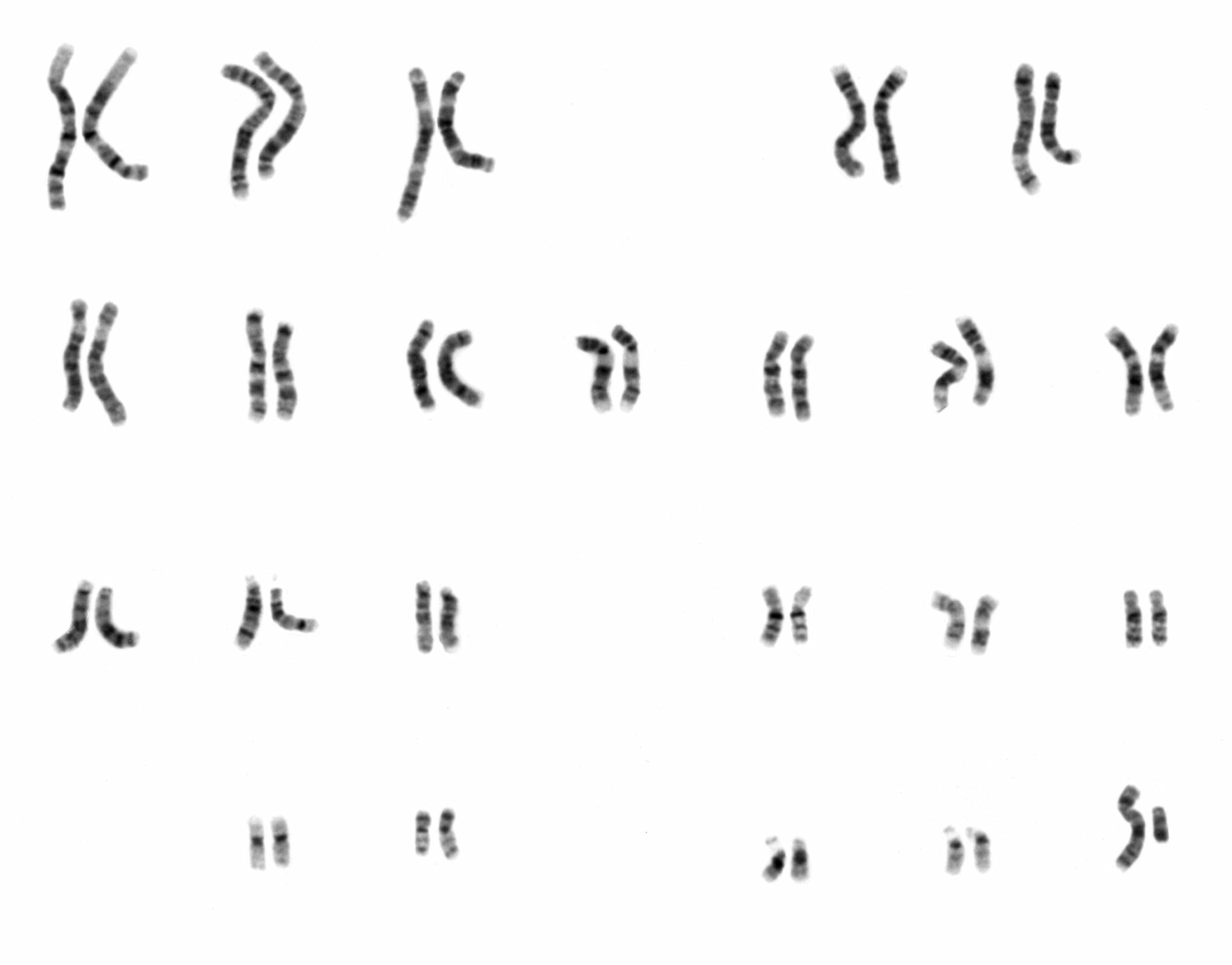Playlist
Show Playlist
Hide Playlist
Cytological Maps
-
Slides 14 Genomics MappingSequencingGenoms Genetics.pdf
-
Reference List Molecular and Cell Biology.pdf
-
Download Lecture Overview
00:00 Mithilfe von Markern können wir zytologische Chromosomenkarten erstellen. Das ist eine zytologische Karte eines Chromosoms. Was genau das ist, ist nicht wirklich wichtig. 00:10 Das Chromosom wurde in Abschnitte zerlegt. Nun können wir die die Lage der Gene auf den Chromosomen bestimmen. Das ähnelt unserer Landkarte. 00:23 Wir betrachten die Staaten und können irgendwo Denver erkennen. Wir haben Orientierungspunkte. 00:30 Bevor wir Denver erreichen, müssen wir einige andere Staaten durchqueren. 00:33 Irgendwann kommen wir in Denver an. Zytologische Chromosomenkarten verwenden Färbungen, um Genomsequenzen zu markieren. 00:42 Um herauszufinden, wo genau sich ein Gen befindet, müssen wir etwas detaillierter arbeiten. 00:48 Beispiele für die Anwendung dieser Methode zur Analyse von Mutationen und Krankheiten sind FISH-Hybridisierung. Das ist eine der Färbetechniken, die wir verwenden können. FISH bedeutet Fluoreszenz-in-situ-Hybridisierung. 01:10 Sie wird zur Markierung von Chromosomen mit fluoreszierendem Farbstoff verwendet, um dadurch festzustellen, ob sie spezifische Gene enthalten. 01:16 Hier ist das Beispiel der chronischen myeloischen Leukämie. Die Erkrankung ist Folge einer Translokation auf den Chromosomen 9 und 22. Es handelt sich um eine reziproke Translokation. 01:30 Die Chromosomen tauschen während des Prozesses der Meiose Abschnitte aus. So entsteht eine Gamete mit einem translozierten Chromosom. Es handelt sich um eine Mutation auf chromosomaler Ebene. 01:46 Rechts sehen Sie das aus zwei Teilen bestehende translozierte Chromosom. 01:52 Es ist viel kleiner. Vielleicht ist Ihnen aufgefallen, dass es sowohl den grünen als auch den roten Fluoreszenzfarbstoff enthält. 01:59 Das können wir bildlich darstellen. In dieser Abbildung sehen Sie einerseits den roten und den grünen Farbstoff separat vorliegen. Zudem treten beide Farben an einer Stelle zusammen auf. 02:14 Die grüne Markierung ist dort sehr nah an der roten. Das zeigt uns, dass dieses Individuum in einem Chromosomsatz eine reziproke Translokation zwischen Chromosom 9 und Chromosom 22 aufweist. 02:27 Zusätzlich gibt es die beiden separaten Farbpunkte, die die Chromosomen 9 und 22 markieren. 02:34 Hinzu kommt das translozierte Chromosom. Eine Kopie wurde transloziert, die andere Kopie ist normal. Diese Person hat die chronisch myeloische Leukämie. 02:47 Diese ist mit einer Überproduktion einer Proteinkinase verbunden, die dadurch zu viele rote Blutkörperchen produziert. Eine ungünstige Voraussetzung. 02:59 Das ist ein Beispiel für die Verwendung zytologischer Chromosomenkarten. Es kann herausgefunden werden, wo Mutationen auf einem Chromosomen lokalisiert sind oder ob ein Individuum eine spezielle Mutation aufweist.
About the Lecture
The lecture Cytological Maps by Georgina Cornwall, PhD is from the course Genomics.
Included Quiz Questions
Which of the following best describes cytological maps?
- Banding patterns of fixed, stained, and condensed meiotic or mitotic chromosomes visualized by microscopic examination
- Banding patterns of fixed, stained, and condensed meiotic or mitotic chromosomes visualized using northern blotting
- Banding patterns of fixed, stained, and condensed meiotic or mitotic chromosomes visualized with Southern blotting
- Banding patterns of fixed, stained, and condensed meiotic or mitotic chromosomes visualized with eastern blotting
- Banding patterns of fixed, stained, and condensed meiotic or mitotic chromosomes separated using gel electrophoresis.
Which of the following best describes fluorescence in situ hybridization (FISH)?
- FISH is a molecular cytogenetic technique used to detect chromosomal abnormalities.
- FISH is a staining technique used to determine abnormalities in the morphologies of cellular organelles.
- FISH is a staining technique used to determine abnormalities in the biochemical composition of the nuclear membrane.
- FISH is a staining technique used to determine abnormalities in the biochemical composition of the endoplasmic reticulum membrane.
- FISH is a staining technique used to determine abnormalities in the biochemical composition of polymerases.
Customer reviews
4,0 of 5 stars
| 5 Stars |
|
0 |
| 4 Stars |
|
1 |
| 3 Stars |
|
0 |
| 2 Stars |
|
0 |
| 1 Star |
|
0 |
it was really helpful,but a bit fast, good details and nice explaining




